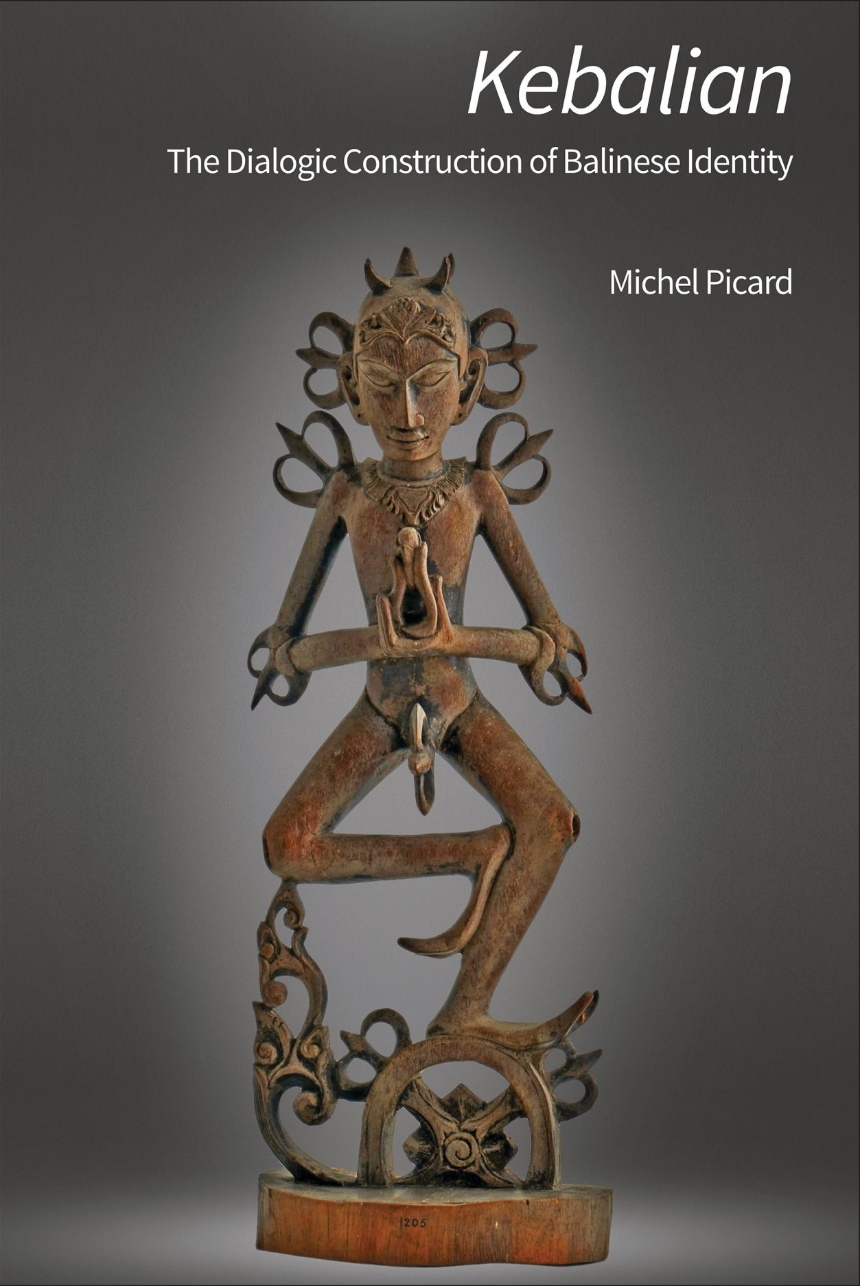9789813252424
Distributed for National University of Singapore Press
Kebalian
The Dialogic Construction of Balinese Identity
An investigation into the complex forces that shape Balinese identity.
Over the past one hundred years, the Balinese have been challenged by colonial occupation, political turbulence, and, most recently, tourism. In response, they have come to rely on the idea of “Kebalian,” or Balinese-ness. Kebalian is likened to a tree whose roots are religion (agama), the trunk is tradition (adat), and the fruits, Balinese culture (budaya). To understand how this sense of Balinese-ness came to be, Michel Picard examines the dialogues that the Balinese have engaged in both among themselves and with outsiders by conducting over a hundred interviews with Balinese opinion leaders, officials, and religious reformers. A key throughline in the construction of Kebalian is what Picard identifies as a twofold process of “religionization” and “Hinduization.” This process began with the first years of the incorporation of Bali into the Dutch East Indies and became more urgent with Indonesia’s independence. Kebalian today encompasses the tension between those Balinese eager to defend their customary ritual practices and advocates of Hinduism who deny that such local traditions qualify as agama. Kebalian presents a fascinating picture of religious change, identities in motion, and culture. Scholars of religion, cultural change, and Southeast Asian area studies will find this to be a fascinating and important book.
Over the past one hundred years, the Balinese have been challenged by colonial occupation, political turbulence, and, most recently, tourism. In response, they have come to rely on the idea of “Kebalian,” or Balinese-ness. Kebalian is likened to a tree whose roots are religion (agama), the trunk is tradition (adat), and the fruits, Balinese culture (budaya). To understand how this sense of Balinese-ness came to be, Michel Picard examines the dialogues that the Balinese have engaged in both among themselves and with outsiders by conducting over a hundred interviews with Balinese opinion leaders, officials, and religious reformers. A key throughline in the construction of Kebalian is what Picard identifies as a twofold process of “religionization” and “Hinduization.” This process began with the first years of the incorporation of Bali into the Dutch East Indies and became more urgent with Indonesia’s independence. Kebalian today encompasses the tension between those Balinese eager to defend their customary ritual practices and advocates of Hinduism who deny that such local traditions qualify as agama. Kebalian presents a fascinating picture of religious change, identities in motion, and culture. Scholars of religion, cultural change, and Southeast Asian area studies will find this to be a fascinating and important book.
592 pages | 5.98 x 9.02 | © 2024
Anthropology: Cultural and Social Anthropology
Religion: Religion and Society
Travel and Tourism: Tourism and History
Reviews
Table of Contents
Preface
Introduction
The discourse of Kebalian
The question of Hinduism
The process of ‘religionization’
Chapter 1: A ‘Living Museum’ of Indo-Javanese Civilization
The ‘Indianization’ of Bali
The orientalist view
The Dutch colonial encounter in Bali
Chapter 2: Making Sense of Colonial Modernity in Bali: The Debate Between Surya Kanta and Bali Adnjana (1920s)
The formation of a Balinese intelligentsia
The debate between Surya Kanta (1925–1927) and Bali Adnjana (1924–1930)
The foundations of Kebalian: agama and adat
Agama Hindu Bali versus agama Bali Hindu
The aftermath of the debate between jaba and triwangsa
Chapter 3: From ‘Living Museum’ to ‘Last Paradise’: The Discovery of Balinese Culture (1930s)
An orientalist view of Balinese culture: Bhawanagara (1930–1935)
The Last Paradise
The Island of Bare Breasts
The Island of Artists
The Island of Gods and Demons
A Lost Paradise?
Chapter 4: Bali Darma Laksana: Between Orientalism and Nationalism (1936–1942)
A social and cultural monthly journal: Djatajoe (1936–1941)
The controversy about Bali and Christian missions
Conversion and its outcome
Balinese queries about their religious identity
Balinese versus Indonesian nationalism
Chapter 5: Towards Recognition of the Balinese Religion (1942–1958)
Ketuhanan Yang Maha Esa
In search of a name
Looking to India
The struggle for the recognition of agama Hindu Bali
Chapter 6: Parisada: From Agama Hindu Bali to Agama Hindu (1958–1998)
Parisada Dharma Hindu Bali
Parisada Hindu Dharma
The New Order
Parisada Hindu Dharma Indonesia
The ‘Hindu Revival’
Chapter 7: Balinese Identity Under the Challenge of Tourism
Cultural Tourism (Pariwisata Budaya)
Cultural Tourism and touristic culture
Touristification and Indonesianization
Tourism development and its discontents in the late New Order
Crisis and Reformasi
The revival of adat under the Regional Autonomy legislation
The Kuta bombing and its aftermath
Ajeg Bali and the politics of Balinese identity
The Benoa Bay reclamation project controversy
Chapter 8: Balinese Religion in the Age of Reformasi
The reform of Parisada Hindu Dharma Indonesia
The schism within Parisada Bali
Back to agama Hindu Bali
Agama Hindu under siege
Bali as the world center of Hinduism?
Conclusion
The Predicament of Balinese Identity
Balinese and Indonesian Organizations
Glossary
Bibliography
Index
Introduction
The discourse of Kebalian
The question of Hinduism
The process of ‘religionization’
Chapter 1: A ‘Living Museum’ of Indo-Javanese Civilization
The ‘Indianization’ of Bali
The orientalist view
The Dutch colonial encounter in Bali
Chapter 2: Making Sense of Colonial Modernity in Bali: The Debate Between Surya Kanta and Bali Adnjana (1920s)
The formation of a Balinese intelligentsia
The debate between Surya Kanta (1925–1927) and Bali Adnjana (1924–1930)
The foundations of Kebalian: agama and adat
Agama Hindu Bali versus agama Bali Hindu
The aftermath of the debate between jaba and triwangsa
Chapter 3: From ‘Living Museum’ to ‘Last Paradise’: The Discovery of Balinese Culture (1930s)
An orientalist view of Balinese culture: Bhawanagara (1930–1935)
The Last Paradise
The Island of Bare Breasts
The Island of Artists
The Island of Gods and Demons
A Lost Paradise?
Chapter 4: Bali Darma Laksana: Between Orientalism and Nationalism (1936–1942)
A social and cultural monthly journal: Djatajoe (1936–1941)
The controversy about Bali and Christian missions
Conversion and its outcome
Balinese queries about their religious identity
Balinese versus Indonesian nationalism
Chapter 5: Towards Recognition of the Balinese Religion (1942–1958)
Ketuhanan Yang Maha Esa
In search of a name
Looking to India
The struggle for the recognition of agama Hindu Bali
Chapter 6: Parisada: From Agama Hindu Bali to Agama Hindu (1958–1998)
Parisada Dharma Hindu Bali
Parisada Hindu Dharma
The New Order
Parisada Hindu Dharma Indonesia
The ‘Hindu Revival’
Chapter 7: Balinese Identity Under the Challenge of Tourism
Cultural Tourism (Pariwisata Budaya)
Cultural Tourism and touristic culture
Touristification and Indonesianization
Tourism development and its discontents in the late New Order
Crisis and Reformasi
The revival of adat under the Regional Autonomy legislation
The Kuta bombing and its aftermath
Ajeg Bali and the politics of Balinese identity
The Benoa Bay reclamation project controversy
Chapter 8: Balinese Religion in the Age of Reformasi
The reform of Parisada Hindu Dharma Indonesia
The schism within Parisada Bali
Back to agama Hindu Bali
Agama Hindu under siege
Bali as the world center of Hinduism?
Conclusion
The Predicament of Balinese Identity
Balinese and Indonesian Organizations
Glossary
Bibliography
Index

